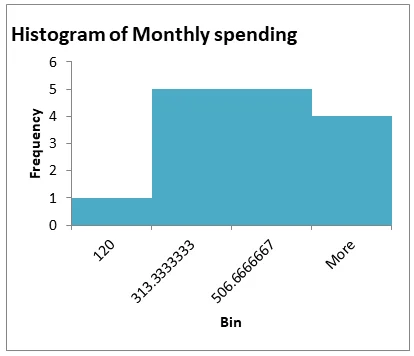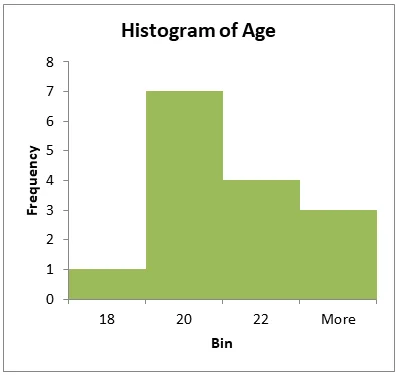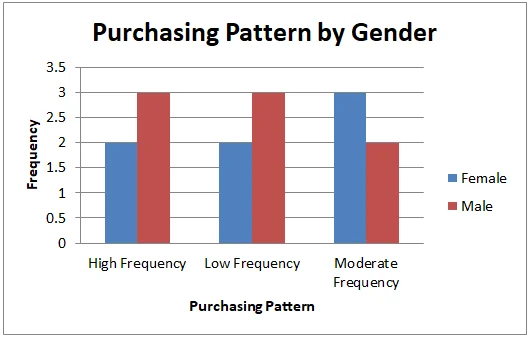Problem Description
In this Data Analysis assignment, we address the challenge of optimizing advertising strategies for a retail business using survey analysis. The company received customer survey data from an external source and sought insights to enhance the effectiveness of their advertising campaigns for short-term specials at each store. The primary objectives were to understand age and monthly spending distributions among customers, analyze purchasing patterns by gender, and provide recommendations for strategic advertising to maximize the impact of their campaigns.
Age and Monthly Spending Distribution
The analysis of age and monthly spending distribution is pivotal in understanding our customer base and tailoring our advertising strategies effectively. By examining these two key factors, we gain valuable insights into the characteristics of our clientele and can make informed decisions to optimize our advertising budgets.
Age Distribution:
Age is a fundamental demographic variable that can significantly influence customer behavior and preferences. Our data reveals that the average age of our male and female customers differs slightly. On average, male customers are approximately 20.75 years old, while female customers have an average age of around 20.57 years. While this age difference may seem modest, it can have substantial implications for our marketing strategies.
Moreover, the standard deviation, which represents the variability in age within each gender group, provides a crucial dimension to our understanding. Males exhibit a higher standard deviation of 2.12, indicating a wider age range among male customers. In contrast, the standard deviation for females is 1.51, suggesting a more tightly clustered age distribution. This variance in age distribution is an important factor to consider when crafting advertising campaigns.
The correlation between age and monthly spending also unveils intriguing patterns. For our male customers, there is a moderately positive correlation of 0.66, indicating that older males tend to spend more. In contrast, our female customers show a weak negative correlation of -0.16, suggesting a subtle decline in spending with increasing age among females. These correlations emphasize the need for tailored advertising strategies based on age, catering to the specific behaviors of each gender.
Monthly Spending Distribution:
Monthly spending is a critical indicator of customer purchasing power and potential. Understanding how different genders spend on a monthly basis is essential for optimizing our advertising budgets.
Our data shows that, on average, female customers exhibit slightly higher spending habits, with an average monthly spending of approximately $388.57. In contrast, male customers have an average monthly spending of approximately $356.25. While the difference in average spending is not monumental, it is statistically significant and calls for tailored approaches in our advertising efforts.
It is noteworthy that both genders display similar levels of spending variability, with standard deviations of $187.30 for females and $188.60 for males. This indicates that, while the average spending differs, both groups have a comparable spread of spending habits. This consistency in spending variability highlights the importance of understanding other factors, such as age, to craft effective advertising strategies.
| Statistics | Variables | Female | Male |
|---|---|---|---|
| Mean | Age | 20.57 | 20.75 |
| Monthly Spending | $388.57 | $356.25 | |
| Std. Dev. | Age | 1.51 | 2.12 |
| Monthly Spending | $187.30 | $188.60 | |
| Correlation | Age | -0.16 | 0.66 |
| Monthly Spending |
Table 1: Summary statistics by gender
Our analysis reveals that male customers are slightly older on average than female customers, and they display more age variability. In terms of monthly spending, females spend slightly more on average. The correlation analysis uncovers interesting insights: older males tend to spend more, while older females spend less. Tailoring advertising strategies to specific age groups could yield distinct outcomes for each gender.

Fig 1: Histogram of Monthly Spending

Fig 2: Histogram of Age
The histograms for age and monthly spending demonstrate that customer behavior is not evenly spread out, indicating the need for customized advertising strategies.
Purchasing Pattern:
Understanding the purchasing patterns of our customers is essential for crafting targeted and effective advertising campaigns. By analyzing these patterns, we can tailor our promotions to align with the preferences and behaviors of our clientele.
Our analysis reveals that both male and female customers exhibit a relatively even distribution across various purchasing patterns. This balance in purchasing patterns suggests that customer preferences do not strongly depend on gender, implying that our audience is diverse and that a one-size-fits-all approach to advertising may not be the most effective strategy.
| Purchasing Pattern | Female | Male |
|---|---|---|
| High Frequency | 2 | 3 |
| Low Frequency | 2 | 3 |
| Moderate Frequency | 3 | 2 |
Table 2: Purchasing patterns of female and male customers
High Frequency Purchasing:
We find that 2 female and 3 male customers prefer high-frequency purchasing patterns. These customers are frequent buyers who make purchases often, and they represent an important segment of our clientele. Understanding their preferences and habits can help us design advertising campaigns that encourage continued high-frequency purchases.
Low Frequency Purchasing:
Another significant group consists of 2 female and 3 male customers who favor low-frequency purchasing patterns. These customers make purchases less frequently, and it's crucial to explore the reasons behind this behavior. Crafting campaigns that engage and convert these customers into more frequent buyers could be a lucrative strategy.
Moderate Frequency Purchasing:
The analysis also indicates that 3 female and 2 male customers opt for moderate-frequency purchasing patterns. These customers fall in between high and low frequency, and understanding their behavior can help us design campaigns that maintain their current purchasing patterns while potentially nudging them toward higher frequency.

Fig 3: Graph- purchasing pattern by gender
Implications:
Purchasing patterns exhibit balanced representation across both genders, indicating that gender does not strongly influence this aspect. We recommend diversified advertising across high, low, and moderate-frequency purchasing patterns to cater comprehensively to customer preferences.
Recommendations:
- Tailored Gender-Specific Campaigns:
- Diversified Advertising across Purchasing Patterns:
- Continual Monitoring and Adaptive Strategies:
- Flexibility and Adaptability:
Recognizing the disparities in average monthly spending and age-related correlations, we propose gender-specific advertising campaigns. For females, focus on the 18-21 age group, which forms the majority of our female customer base. Highlight products and specials catering to their preferences. For males, target the 20-24 age group, aligning campaigns with their interests.
Allocate advertising resources equitably across high, low, and moderate-frequency purchasing patterns. This approach caters comprehensively to varied customer preferences, maximizing engagement and conversion rates.
To ensure campaign success, emphasize ongoing monitoring and adaptability. Regularly assess performance and gather real-time feedback to make necessary adjustments in response to changing market dynamics and customer preferences.
Recognize that customer age and spending histograms do not follow a normal distribution. Maintain flexibility and adaptability in marketing initiatives to cater effectively to the diverse customer landscape.
Conclusion:
By aligning advertising efforts with customer segments' characteristics, we can maximize the impact of short-term specials and allocate advertising budgets efficiently. The implementation of these recommendations is expected to yield positive outcomes and improve overall marketing effectiveness.